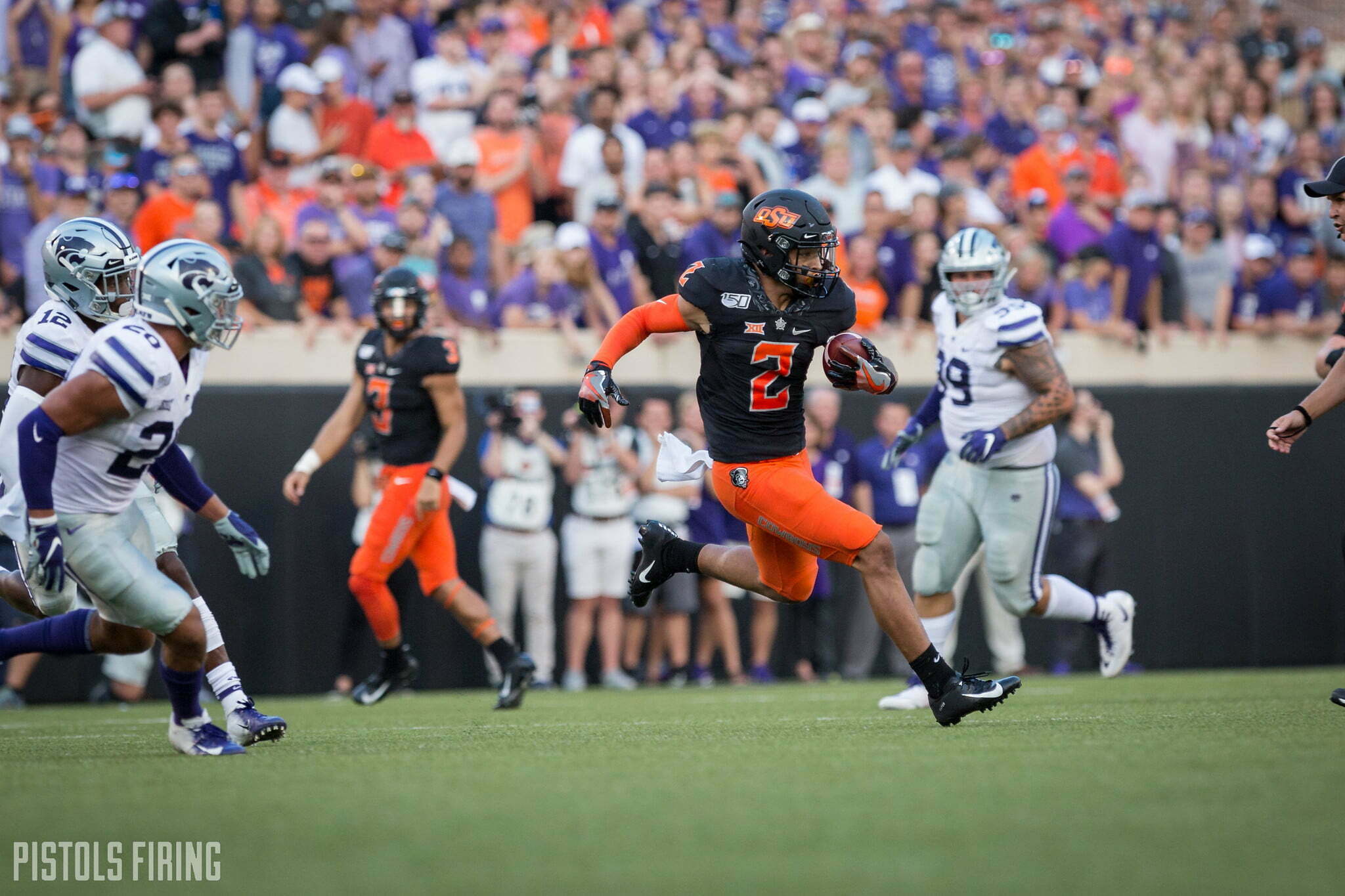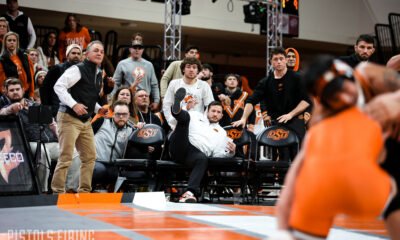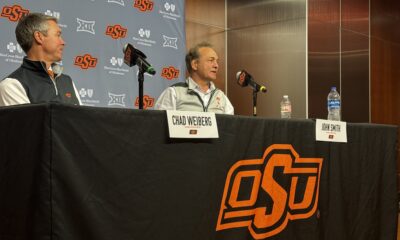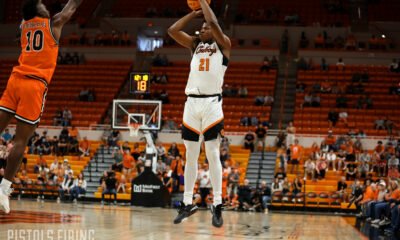Football
A Decentralized College Football System is All Right … Until a Pandemic Hits
How’s this going to play out?

At the heart of so many questions unfolding in college football right now is maybe the biggest one of them all: Wait, so who exactly is in charge here?
It’s a great question and a complicated one. On its best days, college football’s structure allows for independent organizations (conferences) to conduct business regionally while selling media rights on a national (even global) level, and the entire thing is bookended by broad NCAA activities (non-conference games and bowl games) that provide even more money to make the whole thing run.
On its worst days, a pandemic hits.
We often catch glimpses of why a decentralized system within college football can be (and sometimes is) problematic. These mostly play out financially, where the gap between the haves (Big Ten and SEC) and have-nots (mostly the Pac-12) is widening.
But also, because power and decision-making is spread horizontally with little vertical hierarchy, big questions are either left unanswered with nobody in charge to govern the entire thing or — more disconcertingly — the answers to those questions are entirely different across the board.
I thought about this as I read Brett McMurphy’s excellent report on how you could potentially have a college football season in which a percentage (but not all of) the 130 FBS teams nationally competing. Here’s an excerpt.
“Would the decision to play in the fall change if the schools that couldn’t play were Alabama, Auburn and LSU, compared with Vanderbilt, Tennessee or Missouri?” asked one AD who does not represent an SEC school. “I hope not, but these are unprecedented times.”
A Power Five athletic director said if his school could not play football in the fall he would still recommend the league to play without them.
“Why am I holding others back?” the AD asked. “I’d hate it, but I have to do what’s best for college football. Different states will come back at different times. I don’t think you need all 130 (FBS teams) to make it work. If we have a majority that can play, we should play. We may never get it to 100 percent.” [Stadium]
That’s crazy, right? Compounding the situation is that so many commissioners of leagues and presidents of universities have to get on the same page. Things are a little bit simpler in professional sports — NFL and NBA — both because of more centralized leadership and also because there are far fewer teams involved.
The NCAA “governs the whole thing,” but it has less involvement on the football side than you might think. Football — the biggest revenue-generator in college athletics — is also the most fractured when it comes to leadership.
The most logical jumping-off point for any discussion of a post-NCAA world revolves around football because, in many ways, the NCAA already has minimal involvement in the sport at the highest level. Although the NCAA is responsible for making and enforcing the rules that govern football, it has nothing to do with the postseason or the revenue that the sport produces in the Football Bowl Subdivision. It only sanctions championships in the Football Championship Subdivision (formerly I-AA), Division II and non-scholarship Division III, where budgets are much smaller than in the FBS. [USA Today]
Compounding all of this again is that one of the most massive money drivers in the sport is yet another independent entity that is somewhat tethered (but not directly tied) to any broad system. Here’s what the College Football Playoff says on its website.
University presidents and chancellors from all 10 FBS conferences and Notre Dame serve as the Board of Managers and govern the administrative operations, with commissioners (the Management Committee) managing the event. A small staff in the CFP office in Irving, Texas, carries out the day-to-day responsibilities. [CFP]
Surely that will be straightforward and simple during this bizarre time.
Big 12 commissioner Bob Bowlsby has been really good throughout all of this. He was on SiriusXM Big 12 Radio on Thursday and talked his way through what this could look like for the Big 12 (both in football and basketball).
“We will be very, very lucky to start on Labor Day weekend and get through the football season without disruptions,” Bowlsby said on SiriusXM Big 12 Radio on Thursday. “We will be very lucky to get through the postseason and the basketball season without disruptions. We’re going to have a new normal and we’re going to have to have an idea of how we’re going to deal with these things.”
But Bowlsby is simply one power broker in a large pool of them. What will he do if, say, Mike Gundy and Oklahoma State are ready to rock at the end of August but Oregon hasn’t restarted its state yet and Oregon State can’t come to Stillwater? Even more pointedly, what will he do if West Virginia can’t go either?
Under centralized governance, this would likely be more straightforward. It would probably be all or nothing. The answer would be binary. That’s not necessarily better or worse — although it might be depending on how you align politically — but it’s definitely a lot more simple.
Often there is great value in decentralization. Honestly, it’s probably been good for the Big 12 as a whole. It allows regional institutions to operate regionally and it allows plausibility for the idea that the “amateur” in amateur athletics still exists.
However, when there are so many sort-of chiefs but no big chief, it leaves a void when leadership and direction are needed. That’s not necessarily anyone’s fault because boy are different folks incentivized to frame this whole thing differently, but it does mean that the entire superstructure could crumble a bit and even break down entirely, which could be a massive cost of doing business as a decentralized organization.

-

 Wrestling5 days ago
Wrestling5 days agoThe Top 5 Quotes from John Smith’s Retirement News Conference
-

 Wrestling3 days ago
Wrestling3 days agoOSU Wrestling: How John Smith Started a Tradition of Late-Night Workouts For Cowboys Seeking World Glory
-

 Wrestling4 days ago
Wrestling4 days agoOSU Wrestling: The Impact John Smith Had on His Final Boss, Chad Weiberg
-

 Hoops4 days ago
Hoops4 days agoJustin McBride Enters Transfer Portal






